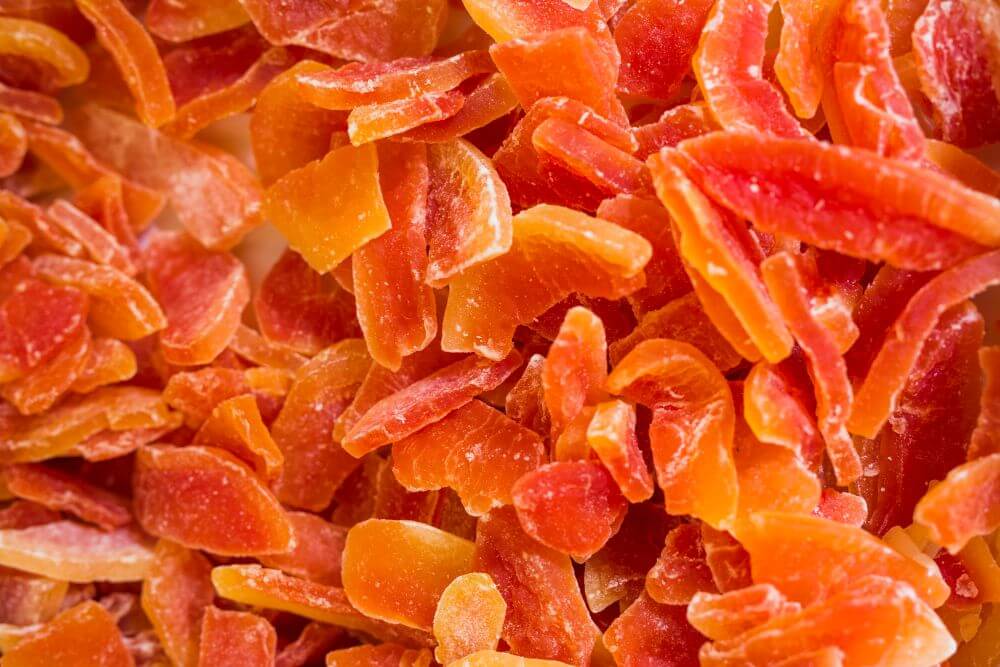A vacuum pump is essential for freeze drying, removing moisture from the processed material. Introducing a vacuum pump into the freeze-drying process is crucial for successfully removing moisture from the material being processed.
By creating a vacuum, the pump effectively lowers the pressure, causing water to evaporate at low temperatures. This allows the material to be dried without high temperatures, preserving its structure and integrity. In addition, the vacuum pump enables faster and more efficient drying, making it an integral part of the freeze-drying process.
Without a vacuum pump, freeze-drying would not be possible on a large scale, as it plays a key role in removing moisture and maintaining the desired quality of the final product.
Vacuum Pump For Freeze Drying: An Introduction
Discover the essential role of a vacuum pump in freeze-drying processes. Learn how this equipment creates the necessary conditions for effective preservation and dehydration.
Freeze drying, also known as lyophilization, is a process that involves removing moisture from a substance without causing damage to its structure. This technique is commonly used in various industries like food, pharmaceuticals, and biotechnology. One crucial component in the freeze-drying process is the vacuum pump.
This section will discuss the importance of vacuum pumps and their role in freeze drying.
Understanding The Importance Of Vacuum Pumps In Freeze Drying Process:
- Lowering the boiling point: Vacuum pumps create a low-pressure environment, reducing water’s boiling point. This enables the moisture within the substance to evaporate at a much lower temperature, preserving the structure and integrity of the material.
- Efficient moisture removal: Vacuum pumps facilitate moisture removal by creating a pressure gradient. The lower pressure in the drying chamber allows the moisture to move from a solid state directly to a vapor state, bypassing the liquid phase. This prevents the formation of ice crystals and ensures a more effective drying process.
- Preventing oxidation and microbial growth: By removing oxygen and creating a controlled environment, vacuum pumps help to prevent oxidation and the growth of microbes during the freeze drying process. This ensures the preservation of the substance’s quality and extends its shelf life.
- Faster drying time: Vacuum pumps aid in speeding up the drying time by facilitating moisture removal. By creating a vacuum, these pumps enhance the sublimation process, where ice directly converts into vapor without going through the liquid phase. This significantly reduces the time required for the freeze drying process.
- Maintaining product integrity: Vacuum pumps play a crucial role in maintaining the integrity of the product being freeze-dried. By providing precise control over the pressure and temperature within the drying chamber, these pumps ensure that the substance remains intact and undergoes minimal structural changes.
Vacuum pumps are an essential component in the freeze drying process. They help to lower the boiling point, facilitate efficient moisture removal, prevent oxidation and microbial growth, speed up the drying time, and maintain the integrity of the product being freeze dried.
Understanding the importance of vacuum pumps is crucial for ensuring successful freeze-drying operations in various industries.
Benefits Of Using A Vacuum Pump
Discover the benefits of using a vacuum pump for freeze drying. With its ability to remove moisture, a vacuum pump helps preserve the quality and extend the shelf life of various products, making it an essential tool in the freeze-drying process.
Freeze drying, a process known for preserving and dehydrating food, pharmaceuticals, and other perishable items, can greatly benefit from using a vacuum pump. This reliable and efficient equipment enhances the freeze-drying process, improves quality, and preserves product attributes.
Enhancing Efficiency And Quality In Freeze Drying:
- Reduced drying time: By creating a vacuum environment, a vacuum pump helps to lower the pressure, allowing water to transform directly from a solid (ice) to a gas (vapor) without passing through the liquid state. This sublimation process significantly reduces drying time, contributing to increased efficiency.
- Improved heat transfer: Vacuum pumps aid in removing moisture from the product by enhancing heat transfer, ensuring a thorough and efficient drying process.
- Precise pressure control: Vacuum pumps allow for precise control of the pressure inside the freeze-drying chamber, enabling optimal conditions for moisture removal and preservation of product quality.
Increased Preservation Of Product Attributes:
- Retention of nutritional value: Vacuum pumps facilitate the preservation of the nutritional value of freeze-dried products, including vitamins, antioxidants, and proteins, ensuring they retain their essential properties.
- Maintained taste and flavor: By minimizing the product’s exposure to high temperatures during drying, vacuum pumps help retain the natural taste, aroma, and flavor profiles of freeze-dried food items.
- Enhanced appearance and texture: Using a vacuum pump results in freeze-dried products with an improved appearance, retaining their original shape, texture, and color, making them more visually appealing and marketable.
Reduction Of Drying Time:
- Increased productivity: Vacuum pumps accelerate the sublimation process by removing moisture more efficiently, reducing the overall drying time. This, in turn, enhances productivity and allows for larger-scale freeze-drying operations.
- Reduced energy consumption: The shorter drying time achieved with the help of vacuum pumps leads to reduced energy consumption, making the freeze-drying process more cost-effective and environmentally friendly.
Manufacturers and researchers can achieve superior results by employing modern vacuum pump technology in the freeze-drying process, including enhanced efficiency, improved preservation of product attributes, and reduced drying time. These benefits contribute to producing high-quality freeze-dried products with extended shelf life, making vacuum pumps an indispensable tool in freeze-drying.
Types Of Vacuum Pumps For Freeze Drying
Discover the various types of vacuum pumps used for freeze-drying processes, ensuring efficient and reliable performance. Choose from a range of options tailored to meet your freeze-drying needs.
Vacuum pumps play a critical role in freeze-drying processes by creating a low-pressure environment for removing substances’ moisture. With various types of vacuum pumps available, it’s important to understand their differences and advantages. In this section, we will explore three common types of vacuum pumps for freeze drying: rotary vane vacuum pumps, scroll vacuum pumps, and diaphragm vacuum pumps.
Rotary Vane Vacuum Pumps:
- Efficient and commonly used in freeze-drying applications.
- Consists of a rotor with vanes that spin in a cylindrical chamber.
- Create a vacuum by compressing gas between the vanes and the chamber wall.
- Capable of achieving high vacuum levels and maintaining a consistent vacuum during the freeze-drying process.
- Ideal for small to medium-scale freeze-drying operations.
Scroll Vacuum Pumps:
- They are a popular choice for freeze-drying due to their oil-free operation.
- It is comprised of two spiral-shaped scroll elements that interlock and rotate.
- Create a vacuum by trapping and compressing gas between the scrolls.
- Offer a clean and reliable vacuum source without the risk of oil contamination.
- Suitable for freeze-drying applications that require oil-free environments, such as pharmaceutical or food industries.
Diaphragm Vacuum Pumps:
- It is well-suited for smaller freeze-drying applications and laboratory settings.
- Use a flexible diaphragm that moves back and forth to generate a vacuum.
- Separate the pumping mechanism from the vacuum chamber, preventing potential oil contamination.
- Operate quietly and require minimal maintenance, making them cost-effective options for low-volume freeze drying.
- It can provide consistent vacuum levels for efficient sample drying.
Understanding the different types of vacuum pumps for freeze drying allows you to choose the most suitable option based on your specific needs. Consider factors such as scale, oil contamination risk, noise level, and maintenance requirements when making your decision.

Factors To Consider When Choosing A Vacuum Pump
When selecting a vacuum pump for freeze drying, it is important to consider factors such as pump capacity, vacuum level, noise level, and maintenance requirements. Additionally, the pump should be compatible with the specific requirements of the freeze-drying application to ensure optimal performance.
Vacuum Level Requirements:
The vacuum level is important when choosing a vacuum pump for freeze drying. Here are the key points to keep in mind:
- Determine the specific vacuum level needed for your freeze-drying application. Different products or materials may require different vacuum levels to achieve optimal results.
- Consider the ultimate vacuum level that the pump can reach. The lower the ultimate vacuum, the better the pump’s performance for freeze drying.
- Check if the vacuum pump has adjustable vacuum level control to meet the specific requirements of your freeze-drying process.
Pumping Speed And Capacity:
Pumping speed and capacity are crucial factors to consider for efficient freeze drying. Take note of the following:
- Evaluate the pumping speed of the vacuum pump, which indicates how quickly it can remove air or other gases from the drying chamber.
- Consider the pump’s capacity and the size of your freeze-drying application. Ensure that the pump can handle the volume of gas or vapor produced during the process.
- Look for a vacuum pump with high pumping speed and sufficient capacity to effectively handle the freeze-drying process within the desired timeframe.
Maintenance And Operating Costs:
Maintenance and operating costs significantly affect selecting the right vacuum pump for freeze drying. Consider the following points:
- Assess the maintenance requirements of the vacuum pump. Look for pumps that are easy to maintain and have accessible components for routine servicing.
- Consider the lifespan of the pump and the availability of replacement parts when evaluating the long-term operating costs.
- Compare the energy efficiency of different vacuum pumps to determine their impact on operating costs. Look for pumps with energy-saving features or technologies.
Remember, the vacuum level requirements, pumping speed and capacity, and maintenance and operating costs should be carefully evaluated when choosing a vacuum pump for freeze drying.
Read Similar Posts:
- Freeze-Dried Lung Dog Treats: The Ultimate Protein-packed Delight
- Vacuum Pump for Freeze Drying: Maximize Efficiency and Quality
- Sow Good Freeze-Dried: The Power of Preserved Nutrition
- Freeze-Dried Turkey for Humans: Unleash Your Taste Buds!
Successful Installation And Operation Of A Vacuum Pump
A vacuum pump’s successful installation and operation are crucial for efficient freeze drying. A properly installed and operated vacuum pump ensures moisture removal from the product, leading to high-quality freeze-dried results. Trust in a reliable vacuum pump for superior freeze-drying performance.
Proper Positioning And Setup
A vacuum pump’s proper positioning and setup are essential for its successful installation and operation. Here are a few important considerations:
- Location: Place the vacuum pump in a well-ventilated area, away from water sources and extreme temperatures.
- Stability: Ensure that the pump is placed on a stable surface or mounted securely to prevent vibrations affecting its performance.
- Electrical connections: Connect the pump to a dedicated power source with the appropriate voltage and follow the manufacturer’s instructions for wiring.
- Inlet and outlet connections: Connect the inlet and outlet hoses properly, using compatible fittings and ensuring a tight seal to prevent air leaks.
- Vacuum gauge: Install a vacuum gauge in a convenient location to monitor the vacuum level accurately.
- Safety precautions: Familiarize yourself with the safety guidelines provided by the manufacturer, such as using protective equipment and following proper procedures for handling chemicals.
Regular Maintenance And Troubleshooting Tips
To keep your vacuum pump in optimal condition and address any issues that may arise, follow these maintenance and troubleshooting tips:
- Regular visual inspection: Periodically inspect the pump for any signs of damage, leaks, or worn-out parts. Replace or repair as necessary.
- Oil changes: Follow the manufacturer’s recommendations for oil changes, as this helps maintain pump performance and longevity. Dispose of used oil properly.
- Cleaning: Keep the pump clean and free from debris. Use non-abrasive cleaning agents and avoid getting water or other liquids into the pump.
- Check for leaks: Regularly check for air leaks in the system, particularly at the connections and fittings. Repair any leaks promptly to maintain efficient operation.
- Lubrication: If your vacuum pump requires lubrication, ensure the proper lubricant type and intervals specified by the manufacturer.
- Noise and vibration: Monitor the pump for any unusual noise or excessive vibrations, which can indicate underlying issues. Consult the manufacturer or a professional technician if needed.
- Troubleshooting: If your vacuum pump is not functioning correctly, consult the manufacturer’s troubleshooting guide for common issues and recommended solutions. If problems persist, seek professional assistance.
Following proper positioning and setup techniques and regularly maintaining and troubleshooting your vacuum pump, you can ensure its successful installation and reliable operation for freeze-drying processes.
Best Practices For Optimizing Efficiency And Quality
Optimize the efficiency and quality of your freeze-drying process with the best practices for using a vacuum pump. Improve productivity by implementing these techniques and achieve top-notch results.
Monitoring Vacuum Levels During The Freeze-Drying Process:
- Regularly monitor the vacuum levels during the freeze drying to ensure optimal efficiency and quality.
- Employ a reliable vacuum gauge to measure the vacuum levels in the freeze dryer accurately.
- Monitor the vacuum levels closely, as fluctuations can affect the drying time and product quality.
- Maintain the vacuum levels within the range specified by the freeze dryer manufacturer.
- Adjust the vacuum levels throughout the freeze-drying process to achieve the desired results.
Proper Maintenance And Cleaning Of The Vacuum Pump:
- Follow the manufacturer’s guidelines for routine maintenance and cleaning of the vacuum pump.
- Keep the vacuum pump free from debris or any substances that may compromise its performance.
- Regularly inspect and replace worn-out or damaged parts to prevent any potential issues.
- Clean the vacuum pump thoroughly, ensuring no residue or contaminants could impact the freeze-drying process.
- Adhere to the recommended maintenance schedule to prolong the lifespan and efficiency of the vacuum pump.
Ensuring Compatibility With Other Freeze Drying Equipment:
- Verify that the vacuum pump is compatible with other freeze-drying equipment, such as the freeze dryer and condenser.
- Consult the manufacturer’s specifications to confirm compatibility and avoid any potential compatibility issues.
- Ensure proper connections between the vacuum pump and other equipment to maintain an airtight seal throughout the process.
- Opt for a vacuum pump specifically designed for freeze-drying applications to guarantee optimal performance.
- Regularly inspect all connections and fittings to avoid leaks or inefficiencies impacting the freeze-drying process.
By diligently monitoring vacuum levels, performing proper maintenance and cleaning of the vacuum pump, and ensuring compatibility with other freeze-drying equipment, you can optimize efficiency and maintain the quality of your freeze-dried products. Remember, following these best practices will improve your freeze-drying process and contribute to your equipment’s longevity.
Frequently Asked Questions
Can You Freeze-Dry With A Vacuum Pump?
Yes, vacuum pumps can be used for freeze-drying. Freeze-drying is a process that removes moisture from a substance by freezing it and then applying a vacuum to convert the frozen water directly into a gas (sublimation) without going through the liquid phase.
A vacuum pump creates a low-pressure environment, allowing the frozen water to evaporate faster. This process helps to preserve the substance’s structure, flavor, and nutritional value. Using a vacuum pump ensures efficient and effective freeze-drying. The vacuum pump removes the moisture, leaving behind a dry and stable product.
Freeze-drying with a vacuum pump is commonly used in various industries, including food processing, pharmaceuticals, and the preservation of sensitive materials like flowers and documents.
What Vacuum Is Needed For Freeze Drying?
The vacuum needed for freeze-drying is typically a vacuum pump. This pump creates a low-pressure environment that allows the freeze-drying process to occur. The vacuum removes water from the material being freeze-dried, which helps preserve it for longer periods of time.
Without the vacuum, freeze-drying would not be possible. It is important to ensure that the vacuum pump is suitable for freeze-drying applications.
Is The Oil Free Pump Worth It On A Freeze Dryer?
Yes, the oil-free pump is worth it for a freeze-dryer. It offers several benefits. Firstly, it eliminates the need for oil changes and reduces maintenance costs. Secondly, it prevents oil contamination in the samples, ensuring the purity of the freeze-dried product.
Thirdly, it reduces the risk of oil spills and leaks, promoting a cleaner and safer working environment. Lastly, an oil-free pump improves the overall efficiency of the freeze-dryer, allowing for faster and more consistent freeze-drying cycles. So, investing in an oil-free pump for your freeze dryer is a wise choice that saves time, money, and effort while enhancing the quality of your freeze-dried products.
Is A Freeze Dryer Just A Vacuum Chamber?
A freeze dryer is not just a vacuum chamber. It is a machine that combines a vacuum chamber and low temperature to freeze and remove moisture from a substance. The process is called lyophilization and helps preserve food, pharmaceuticals, and other products.
The substance is frozen and then placed in a vacuum chamber during the freeze-drying process. The vacuum lowers the pressure, causing the frozen water to sublimate and turn directly into vapor without passing through a liquid phase. This helps retain the product’s original structure, flavor, and nutrients.
The vacuum chamber plays a vital role in freeze-drying by creating the low-pressure environment necessary for the sublimation process. It removes the moisture from the substance, while the freezing temperatures prevent the growth of microorganisms. So, a freeze dryer is more than just a vacuum chamber.
It utilizes both vacuum and freezing temperatures to remove moisture and preserve products effectively.
Final Words
To summarize, a vacuum pump plays a crucial role in freeze-drying, offering several benefits that enhance efficiency and quality. Creating a controlled environment of low pressure enables rapid sublimation of water from products, preserving delicate structures and properties.
The vacuum pump removes moisture without compromising nutritional content or flavors. Moreover, it ensures a quicker drying time, facilitating mass production and reducing costs. Proper maintenance and regular inspections are essential to ensure the smooth functioning of the vacuum pump.
Additionally, considering the different types and sizes of vacuum pumps available, it is crucial to choose the most suitable one for specific freeze-drying needs. Selecting a high-quality vacuum pump from a reputable manufacturer will optimize the freeze-drying process and extend the equipment’s lifespan.
So, whether preserving food, pharmaceuticals, or other sensitive materials, investing in an efficient vacuum pump is paramount for achieving premium freeze-dried products.









